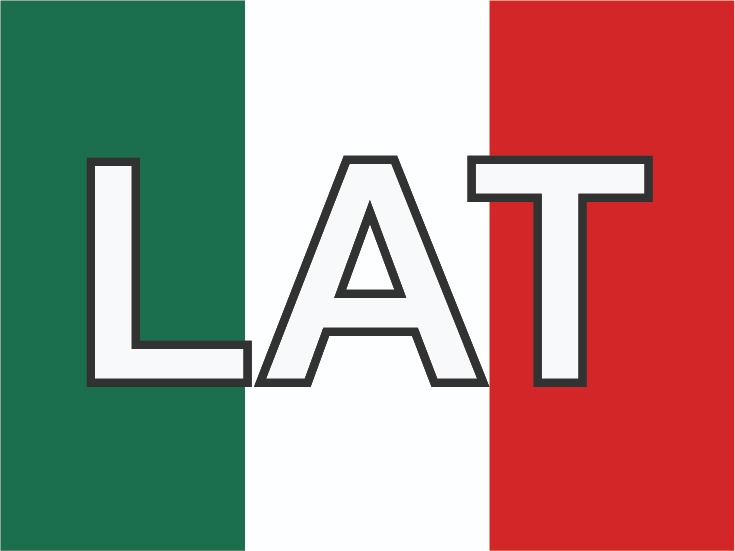Relationship between Duffy blood groups genotypes and malaria infection in different ethnic groups of Choco- Colombia
Abstract
Background: The negative homozygous condition for the Duffy blood group (Fy-/Fy-) confers natural resistance to Plasmodium vivax infection. In this direction, studies carried out in Colombia are scarce
Objective: To describe the relationship between Duffy genotypes in three ethnic communities in La Italia (Chocó) and malaria infection.
Methodology: a descriptive, cross-sectional study in symptomatic and asymptomatic malaria subjects. Sample size : Afro American, 73; Amerindian (Emberá), 74 and Mestizo, 171. Presence of Plasmodium infection was assessed by thick smear and the status of the Duffy gene by PCR and RFLP in order to identify the substitutions T-46C y A131G which origin the genotypes T/T, T/C , C/C y G/G, G/A, A/A.
Results: Infection by Plasmodium was detected in 17% with 62% due to P. falciparum and 27% to P. vivax. Duffy genotypes were significantly associated to ethnicity (p= 0,003). Individuals with the C/C, A/A diplotype were exclusively infected by P. falciparum, whereas other diplotypes were infected with either species. In the Amerindian and Mestizo populations, the frequency of the T-46 allele was 0,90-1,00, among Afrocolombians this was 0,50, equal to the C allele and with absence of heterozygous At locus 131, the highest frequency of the G allele was 0,30 in Amerindians and the A allele was 0,69 in Afrocolombians.
Conclusions: In the Amerindian and mestizo populations studied, a predominance of the allele T-46 (FY+) was observed, but P. vivax was not the most common. Infection by P. vivax was out ruled in all FY- individuals.
Authors
Downloads
Keywords
- Duffy Blood-Group System
- ethnic groups
- malaria
- Plasmodium falciparum
- Plasmodium vivax
- Colombia
References
Rowe JA, Opi DH, Williams TN. Blood groups and malaria: fresh insights into pathogenesis and identification of targets for intervention. Curr Opin Hematol. 2009; 16(6): 480-7.
Tournamille C, Le Van Kim C, Gane P, Cartron JP, Colin Y. Mo¬lecular basis and PCR-DNA typing of the Fya/fyb blood group po¬lymorphism. Hum Genet. 1995;95(4):407-10.
Cavasini CE, de Mattos LC, Couto AA, Couto VS, Gollino Y, Moretti LJ, et al. Duffy blood group gene polymorphisms among malaria vivax patients in four areas of the Brazilian Amazon re¬gion. Malar J. 2007. 6: 167.
Cavasini CE, Mattos LC, Couto AA, Bonini-Domingos CR, Va¬lencia SH, Neiras WC, et al. Plasmodium vivax infection among Duffy antigen-negative individuals from the Brazilian Amazon region: an exception? Trans R Soc Trop Med Hyg. 2007. 101: 1042-4.
Menard D, Barnadas C, Bouchier C, Henry-Halldin C, Gray LR, Ratsimbasoa A, et al. Plasmodium vivax clinical malaria is com¬monly observed in Duffy-negative Malagasy people. Proc Natl Acad Sci. 2010. 107: 5967-71.
Mendes C, Dias F, Figueiredo J, Mora VG, Cano J, de Sousa B, et al. Duffy negative antigen is no longer a barrier to Plasmodium vivax--molecular evidences from the African West Coast (Angola and Equatorial Guinea). PLoS Negl Trop Dis. 2011 5(6): e1192.
Ryan JR, Stoute JA, Amon J, Dunton RF, Mtalib R, Koros J, et al. Evidence for transmission of Plasmodium vivax among a duffy antigen negative population in Western Kenya. Am J Trop Med Hyg. 2006:575-81.
Wurtz N, Mint Lekweiry K, Bogreau H, Pradines B, Rogier C, Ould Mohamed Salem Boukhary A, et al. Vivax malaria in Mauritania includes infection of a Duffy-negative individual. Malar J. 2011:336.
Li J, Iwamoto S, Sugimoto N, Okuda H, Kajii E. Dinucleotide repeat in the 3’ flanking region provides a clue to the molecular evolution of the Duffy gene. Hum Genet. 1997;99(5):573-7.
Tournamille C, Blancher A, Le Van Kim C, Gane P, Apoil PA, Nakamoto W, et al. Sequence, evolution and ligand binding properties of mammalian Duffy antigen/receptor for chemokines. Immunogenetics. 2004;55(10):682-94.
Welch SG, McGregor IA, Williams K. The Duffy blood group and malaria prevalence in Gambian West Africans. Trans R Soc Trop Med Hyg. 1977;71(4):295-6.
Miller LH, Mason SJ, Clyde DF, McGinniss MH. The resistance factor to Plasmodium vivax in blacks. The Duffy-blood-group genotype, FyFy. N Engl J Med. 1976;295(6):302-4.
Mathews HM, Armstrong JC. Duffy blood types and vivax malaria in Ethiopia. Am J Trop Med Hyg. 1981;30(2):299-303.
Howes RE, Patil AP, Piel FB, Nyangiri OA, Kabaria CW, Gething PW, et al. The global distribution of the Duffy blood group. Nat Commun. 2011 Macmillan Publishers Limited; 2011:266.
Sandoval C, De la Hoz A, Yunis E, 1993. Estructura genética de la Población Colombiana. Revista Facultad de Medicina Universidad Nacional de Colombia 41:3-14.
Montoya F, Restrepo M, Montoya AE, Rojas W. Blood groups and malaria. Rev Inst Med Trop Sao Paulo. 1994;36(1):33-8.
Ochoa J, Osorio L. Epidemiology of urban malaria in Quibdo, Choco. Biomedica. 2006;26(2):278-85.
Herrera S, Gomez A, Vera O, Vergara J, Valderrama-Aguirre A, Maestre A, et al. Antibody response to Plasmodium vivax antigens in Fy-negative individuals from the Colombian Pacific coast. Am J Trop Med Hyg. 2005:44-9.
Singh N, Shukla MM, Uniyal VP, Sharma VP. ABO blood groups among malaria cases from district Mandla, Madhya Pradesh. Indian J Malariol. 1995;32(2):59-63.
Fischer PR, Boone P. Short report: severe malaria associated with blood group. Am J Trop Med Hyg. 1998;58(1):122-3.
Martinez Bencardino C. Estadística y muestreo; 2000.
Hadley TJ, Peiper SC. From malaria to chemokine receptor: the emerging physiologic role of the Duffy blood group antigen. Blood. 1997;89(9):3077-91.
DANE. Grupos étnicos de Colombia en el censo de 1993. Bogotá: Departamento Administrativo Nacional de Estadística. 1998.
Cucunuba ZM, Guerra AP, Rahirant SJ, Rivera JA, Cortes LJ, Nicholls RS. Asymptomatic Plasmodium spp. infection in Tierralta, Colombia. Mem Inst Oswaldo Cruz. 2008;103(7):668-73.
Njama-Meya D, Kamya MR, Dorsey G. Asymptomatic parasitaemia as a risk factor for symptomatic malaria in a cohort of Ugandan children. Trop Med Int Health. England; 2004:862-8.
Chiaroni J, Touinssi M, Frassati C, Degioanni A, Gibert M, Reviron D, et al. Genetic characterization of the population of Grande Comore Island (Njazidja) according to major blood groups. Hum Biol. 2004;76(4):527-41.
Bravo ML, Valenzuela CY, Arcos-Burgos OM. Polymorphisms and phyletic relationships of the Paisa community from Antioquia (Colombia). Gene Geogr. 1996;10(1):11-7.
Dönbak L RE. Frequency of blood group antigens and corresponding alleles in Mediterranean region of Turkey. 2002;5:326-29.
Weber SS, Pedro W, Martins T, Sotero A. Frecuencia alélica del Sistema del Grupo Sanguíneo Duffy en individuos de una población de la Amazonía brasilena y su relación con la infección por Plasmodium vivax. Revista Pan-Amazônica de Saúde. 2010;1(2):149-.
The copy rights of the articles published in Colombia Médica belong to the Universidad del Valle. The contents of the articles that appear in the Journal are exclusively the responsibility of the authors and do not necessarily reflect the opinions of the Editorial Committee of the Journal. It is allowed to reproduce the material published in Colombia Médica without prior authorization for non-commercial use




















